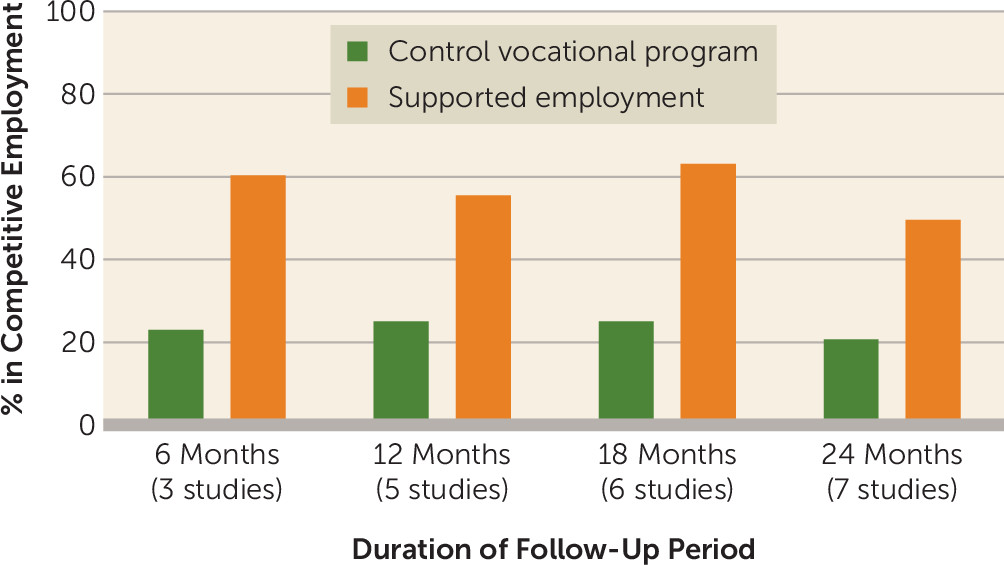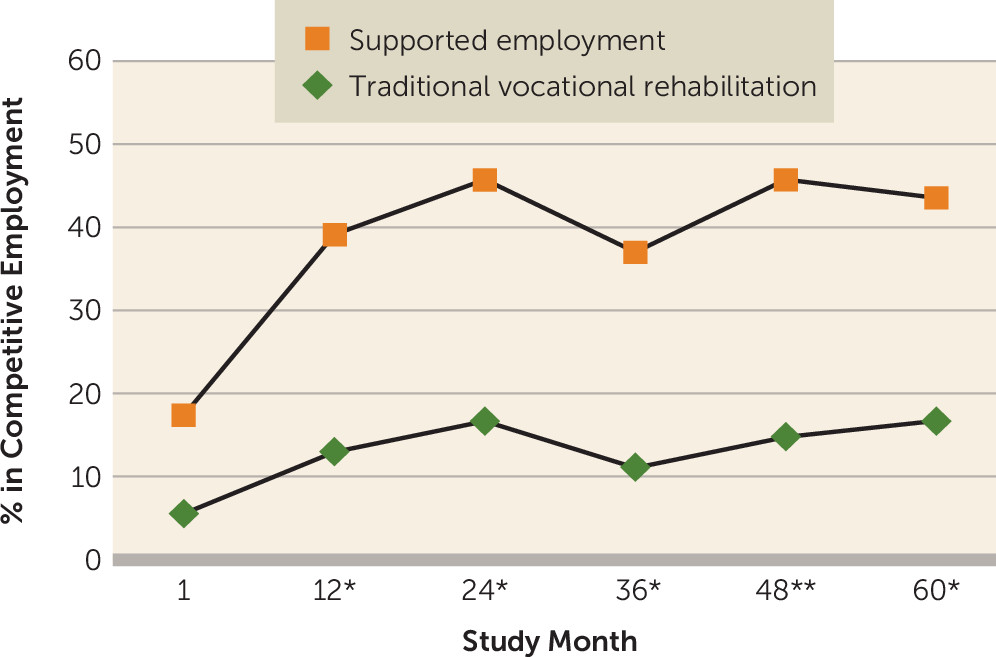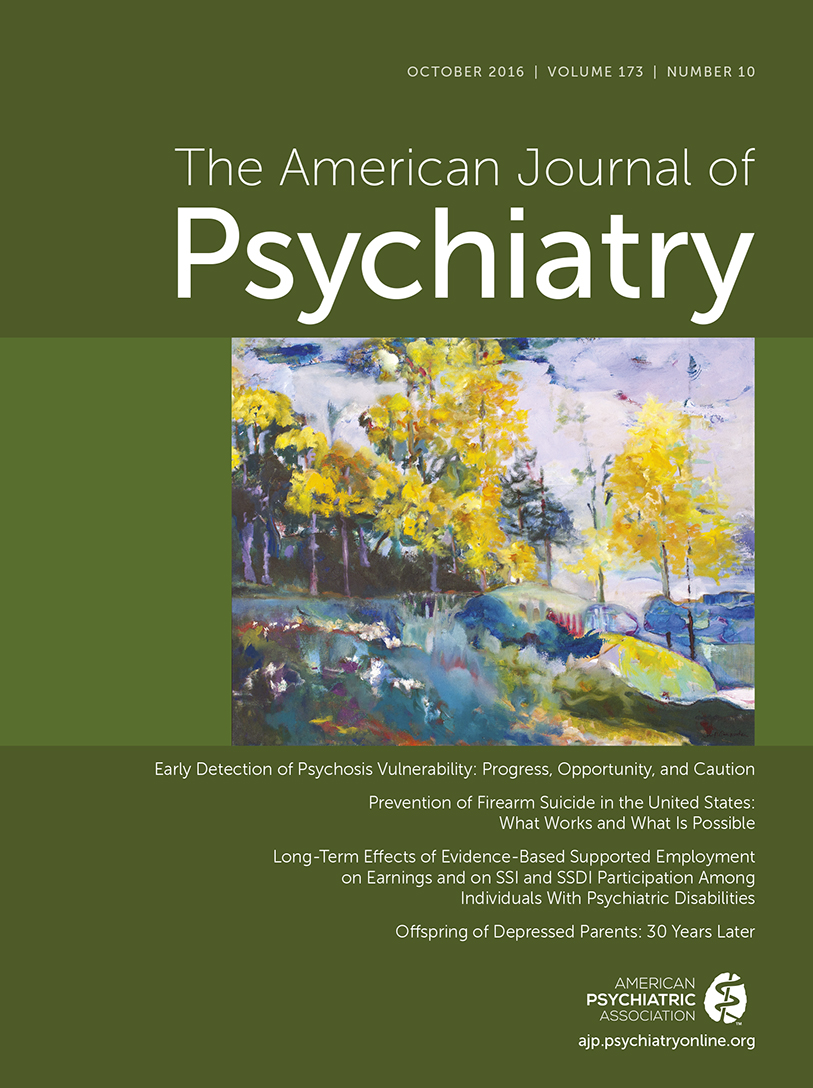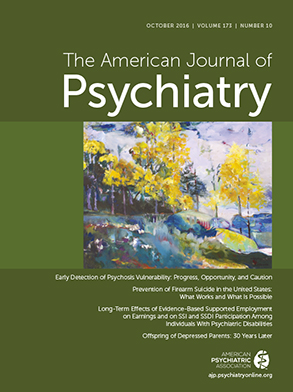In this issue, Cook and colleagues (
1) publish new and important findings demonstrating the long-term impact of supported employment for persons with severe psychiatric disorders on competitive work long after participation in a study evaluating supported employment programs. Supported employment is an evidence-based approach to improving work that emphasizes zero-exclusion criteria to receive vocational services other than desire to work, includes rapid job search for competitive jobs in the community, and has no required prevocational training. This approach also includes provision of follow-along supports after work is obtained, attention to participant preferences regarding jobs sought and disclosure of psychiatric disability, integration of vocational and clinical services, and benefits counseling (
2). The results of this study have important policy implications for the role of supported employment in enhancing and sustaining competitive employment outcomes for persons with a psychiatric disability and for reducing financial dependency on the Social Security Administration (SSA), family, and friends.
Cook et al. examined the rates of competitive employment, earnings, and termination of SSA cash benefits (i.e., Supplemental Security Income or Social Security Disability Insurance) due to work over a 13-year period in 449 study participants with a psychiatric disability who had recently completed a 2-year randomized controlled trial comparing supported employment programs with other vocational rehabilitation models (
3). During the initial 2-year controlled trial period that took place before the long-term follow-up study by Cook et al., participants who had been randomized to a supported employment program were much more likely to work competitively compared with those who had been assigned to a control vocational program (56% compared with 36%, respectively). Remarkably, after the study ended, participants who had initially received supported employment continued to have better work outcomes for another 6–8 years and were more likely to have a suspension or termination of their disability cash payments due to work compared with participants in other vocational rehabilitation programs. After the 6–8 years following completion of the study, the two groups no longer differed in overall rates of competitive work or receipt of cash benefits, and employment rates declined for both groups over the 13-year follow-up period. The findings underscore the potency of the supported employment model for improving competitive work outcomes for people with psychiatric disabilities and point to the need to increase access to these effective vocational rehabilitation services.
At first glance, the differences in work functioning between participants initially randomized to supported employment or to the control program over the 13 years following the end of the study may not appear impressive. For example, although a higher percentage of participants in the supported employment group were working every year between 2000 and 2007 relative to the control group, rates of earned income were relatively low for both groups (i.e., below 20%), and only 13% of participants had a suspension or termination of cash payments due to work during the follow-up period. However, these employment and disability payment outcomes were observed over a 13-year period that began at the end of a 2-year randomized controlled trial of supported employment, when such vocational services were no longer routinely available to study participants. Thus, the superior competitive work outcomes over the first 6–8 years of follow-up for participants who initially received supported employment, and their higher rates of suspension or termination of cash payments due to work, likely reflect the long-term benefits of assistance in obtaining and keeping work provided during the initial 2-year study period. The results raise the intriguing question: Would even stronger competitive work outcomes have been observed if supported employment services had continued to be available to study participants over the full 13-year follow-up period? There are compelling reasons to suspect that the answer to this question is a resounding “Yes!”
Supported employment is not intended to be a time-limited intervention provided for a fixed period of time and then withdrawn. Rather, as described in the individual placement and support model (
2), the most standardized and evidence-based approach to supported employment, vocational services should be provided on a time-unlimited basis and aimed at helping people find and keep competitive jobs in the community and at helping people transition to new jobs when opportunities arise or a job fails to work out. Strong research supports the effectiveness of supported employment compared with other vocational models for improving work outcomes over moderate lengths of time. Specifically, a total of 21 randomized controlled trials have been conducted throughout the world comparing supported employment with control vocational programs over follow-up periods ranging from 6 months to 24 months (
4). As shown in
Figure 1, across all follow-up periods, cumulative rates of competitive employment for participants who were randomized to supported employment ranged from 50% to 63% and were approximately twice as high as the employment rates (21%–25%) of participants who were randomized to control vocational programs.
This leads to a second question: Are the high rates of work observed over 6–24 months in people who receive supported employment maintained over the long term? The results of one recent study suggest that they are. Hoffmann and colleagues (
5) compared competitive work outcomes over a 5-year follow-up period for participants with severe mental illness who were randomly assigned to a supported employment or a control vocational program. As summarized in
Figure 2, the year-by-year rates of competitive work for the supported employment participants ranged between 38% and 48% from the first to the last year of the 5-year follow-up period, compared with rates of between 11% and 18% for the control group. Furthermore, supported employment participants had significantly fewer hospitalizations and spent less time in the hospital than control participants, suggesting that returning to work may have also had clinical benefits, as has been reported in other studies of supported employment (
6).
The findings from Cook et al. demonstrate the potency of supported employment in helping people with psychiatric disabilities obtain competitive jobs, with the benefits of such assistance persisting for many years. Research suggests that long-term access to supported employment could boost employment rates for people with severe mental illness even higher than the rates reported by Cook et al. and could reduce disability cash payments, as well. Furthermore, promising research suggests that adding interventions such as cognitive remediation to supported employment may further improve competitive work outcomes (
7).
However, despite the strong research demonstrating the effectiveness of supported employment for improving competitive work outcomes, access to these programs remains very limited primarily because of funding barriers (
4), including a lack of a single, dedicated funding source for supported employment (
8,
9). Work can have transformative effects on how people with a psychiatric disability see themselves and how they are viewed by society. Competitive work plays a key role in the process of recovery from major mental illnesses (
10), and as shown by Cook et al., it can also reduce financial dependence on others, including entities that provide disability cash benefits. It is time to recognize the importance of improving competitive work functioning for people with a psychiatric disability and of “putting our money where our mouth is” by making supported employment available to the broad range of individuals who could benefit from it.



